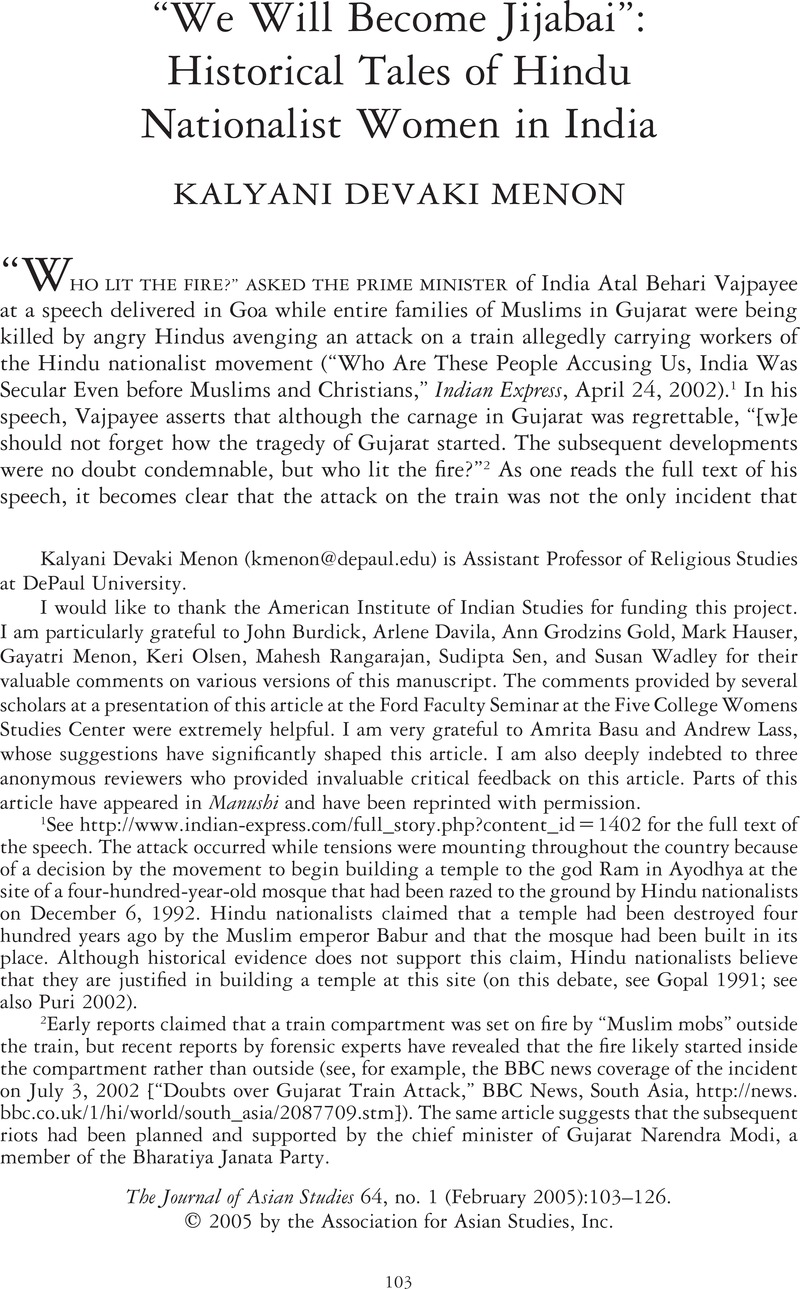Crossref Citations
This article has been cited by the following publications. This list is generated based on data provided by Crossref.
Menon, Kalyani Devaki
2006.
Women’s Renunciation in South Asia.
p.
141.
Manjrekar, Nandini
2011.
Ideals of Hindu girlhood: Reading Vidya Bharati’s Balika Shikshan.
Childhood,
Vol. 18,
Issue. 3,
p.
350.
Bedi, Tarini
2011.
A Companion to the Anthropology of India.
p.
313.
Sarbadhikary, Sukanya
and
Roy, Dishani
2023.
Gender, Education and Citizenship as Ideological Weapons of an ‘Army of Holy Women’ in Bengal: The Matua Matri Sena.
Religions,
Vol. 14,
Issue. 6,
p.
787.





